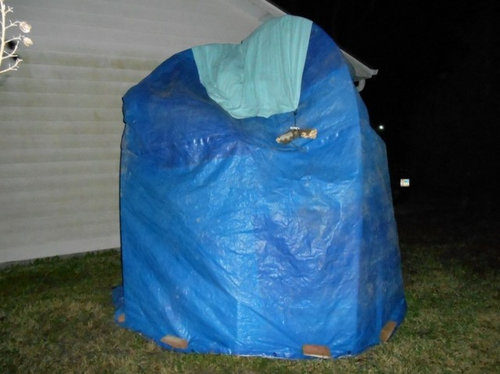Protecting Citrus from the Cold
johnorange
10 years ago
Related Stories

HOUSEKEEPINGProtect Your House From Winter Water Damage
Avoid costly repairs by learning to spot potential problem areas before water damage is done
Full Story
HOME TECHTo Feed and Protect: Care for Your Pet From Afar With New Devices
You might miss the nuzzles, but your dog or cat won't miss food, water or monitoring with these high-tech feeders and cameras
Full Story
GARDENING GUIDESHow to Keep Your Citrus Trees Well Fed and Healthy
Ripe for some citrus fertilizer know-how? This mini guide will help your lemon, orange and grapefruit trees flourish
Full Story
COLORColor of the Week: 10 Tangy Ways with Citrus Green
Add some zest to your home with a little — or a lot of — lively lime
Full Story
APARTMENTSHouzz Tour: Refreshing Citrus Twist in a London Home
Orange, yellow and green accents wake up a neutral palette in a new 1-bedroom unit
Full Story
GARDENING GUIDESSpring Citrus Care Reaps Months of Sweet Rewards
Learn how to tend citrus trees in spring and ways to preserve their delicious fruit
Full Story
GARDENING AND LANDSCAPINGCitrus 101: Start Your Own Backyard Orchard
This Earth Day Weekend, Add Some Green, Style and Deliciousness to Your Landscape
Full Story
WINTER GARDENINGExtend Your Growing Season With a Cold Frame in the Garden
If the sun's shining, it might be time to sow seeds under glass to transplant or harvest
Full Story
ARCHITECTURE15 Smart Design Choices for Cold Climates
Keep your home safe and comfortable in winter by choosing the right home features and systems
Full StoryMore Discussions









johnorangeOriginal Author
johnmerr
Related Professionals
Londonderry Landscape Architects & Landscape Designers · Maple Valley Landscape Architects & Landscape Designers · Bellflower Landscape Architects & Landscape Designers · Cary Landscape Architects & Landscape Designers · Fair Lawn Landscape Contractors · Gaithersburg Landscape Contractors · Lemoore Landscape Contractors · Lewisville Landscape Contractors · Norristown Landscape Contractors · Oak Forest Landscape Contractors · Oviedo Landscape Contractors · Plainview Landscape Contractors · Roseville Landscape Contractors · Sammamish Landscape Contractors · Norco Stone, Pavers & Concretejohnmerr
johnorangeOriginal Author
johnorangeOriginal Author
johnmerr
johnorangeOriginal Author
johnorangeOriginal Author
tantanman
johnorangeOriginal Author
poncirusguy6b452xx